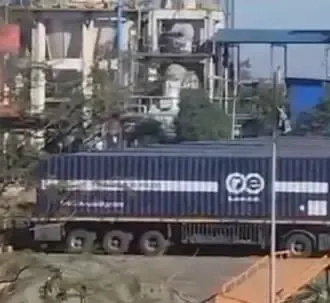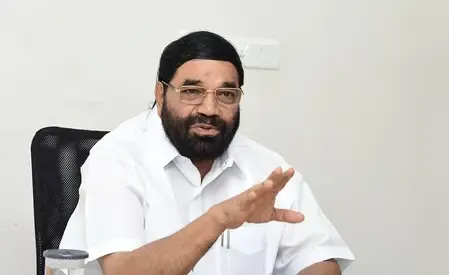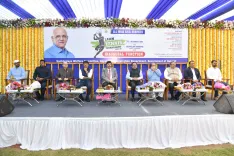Commencement of Second Incineration Trial for Union Carbide Waste

Synopsis
Key Takeaways
- Second trial incineration begins today in Pithampur.
- Initial incineration lasted 75 hours, processing 135 kg/hour.
- 180 kg of waste will be incinerated each hour in the second round.
- 337 tonnes of hazardous waste from Bhopal being disposed.
- Supervised by pollution control officials.
Pithampur, March 5 (NationPress) The second trial incineration of Union Carbide's hazardous waste at the Pithampur industrial site in Madhya Pradesh is set to commence today.
The initial incineration round, which began on March 3, continued for approximately 75 hours, with 135 kg of waste processed in the incinerator every hour.
Upon completion, the incinerator underwent a cooling period lasting about 18-20 hours, as reported by officials.
The second phase of incineration was postponed due to this cooling duration and will now process around 180 kg of waste per hour.
Currently, there are roughly 337 tonnes of waste from the inactive Union Carbide facility in Bhopal, which was transported to the disposal plant managed by a private entity in Pithampur, located about 250 km from the state capital, on January 2.
The incineration operation is being conducted under the supervision of senior officials from the National Pollution Control Board (NPCB), Madhya Pradesh Pollution Control Board (MPCB), and local administration.
The State Pollution Control Board indicated that the first waste disposal round successfully eliminated particulate matter.
Emissions of particulate matter (PM), sulphur dioxide, nitrogen oxide, carbon monoxide, hydrogen chloride, hydrogen fluoride, and total organic carbon were all within acceptable limits.
Scientific evaluations suggest that the impact of Sevin and naphthal chemicals in this waste has become nearly insignificant.
The state government previously noted that the waste from the Union Carbide facility consists of soil from the closed site, reactor residues, Sevin (pesticide) residues, naphthal residues, and semi-processed materials.
Following directives from the Madhya Pradesh High Court, Union Carbide's waste was relocated to the Pithampur industrial area. The toxic waste disposal is expected to conclude by March 27.
The highly toxic methyl isocyanate (MIC) gas leaked from the Union Carbide factory in Bhopal during the night of December 2 and 3, 1984.
This incident resulted in the deaths of at least 5,479 individuals and left countless others incapacitated, marking it as one of the most significant industrial disasters globally.










